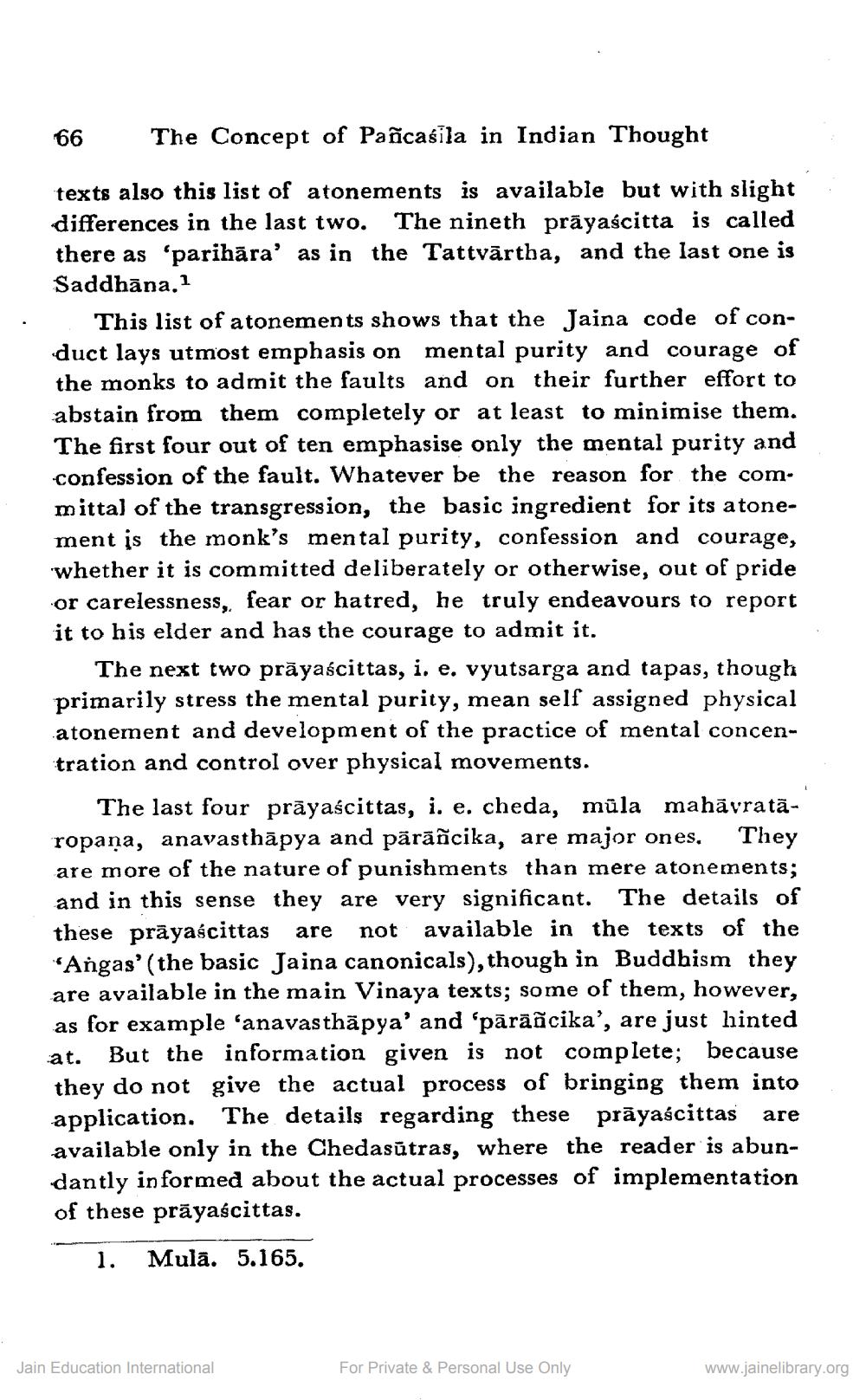________________
66 The Concept of Pañcasila in Indian Thought texts also this list of atonements is available but with slight differences in the last two. The nineth prāyaścitta is called there as 'parihāra' as in the Tattvārtha, and the last one is Saddhāna. 1
This list of atonements shows that the Jaina code of conduct lays utmost emphasis on mental purity and courage of the monks to admit the faults and on their further effort to abstain from them completely or at least to minimise them. The first four out of ten emphasise only the mental purity and confession of the fault. Whatever be the reason for the committal of the transgression, the basic ingredient for its atonement is the monk's mental purity, confession and courage, whether it is committed deliberately or otherwise, out of pride or carelessness, fear or hatred, he truly endeavours to report it to his elder and has the courage to admit it.
The next two prāyaścittas, i. e. vyutsarga and tapas, though primarily stress the mental purity, mean self assigned physical atonement and development of the practice of mental concentration and control over physical movements.
The last four prāyaścittas, i. e. cheda, mūla mahāvratāropana, anavasthāpya and pārāñcika, are major ones. They are more of the nature of punishments than mere atonements; and in this sense they are very significant. The details of these prāyaścittas are not available in the texts of the "Angas' (the basic Jaina canonicals), though in Buddhism they are available in the main Vinaya texts; some of them, however, as for example 'anavasthāpya' and 'pārāācika', are just hinted at. But the information given is not complete; because they do not give the actual process of bringing them into application. The details regarding these prāyaścittas are available only in the Chedasūtras, where the reader is abundantly informed about the actual processes of implementation of these prāya cittas.
1. Mulā. 5.165.
Jain Education International
For Private & Personal Use Only
www.jainelibrary.org




